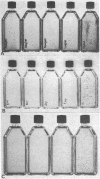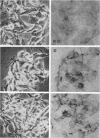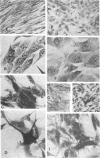Abstract
Tumorigenicity of mouse melanoma cells is reduced or lost upon growth in vitro in 1 to 3 μg/ml of 5-bromodeoxyuridine (BUdR). The rate of growth is very little affected by these concentrations. The morphology of the cells is altered, such that the cells grow in a flattened, often fibroblastic monolayer, showing contact inhibition, instead of the rounded, multilayered mounds characteristic of the line. Melanotic cells lose their pigment-producing ability within one week. These effects are reversible and the inclusion of thymidine with BUdR prevents their occurrence. The reduction in tumorigenicity, the effects on cell morphology, and the suppression of pigmentation occur in clones derived from single cells growing in BUdR as well as in mass populations. These clones appear capable of indefinite growth in vitro in BUdR with altered morphology. The suppression of cytodifferentiation in these melanoma cells and in embryonic cells, coupled with the modification of malignancy, leads to the hypothesis that both differentiation and malignancy are regulated by similar cellular mechanisms. These effects of BUdR offer promise of a powerful tool to probe these regulatory mechanisms.
Full text
PDF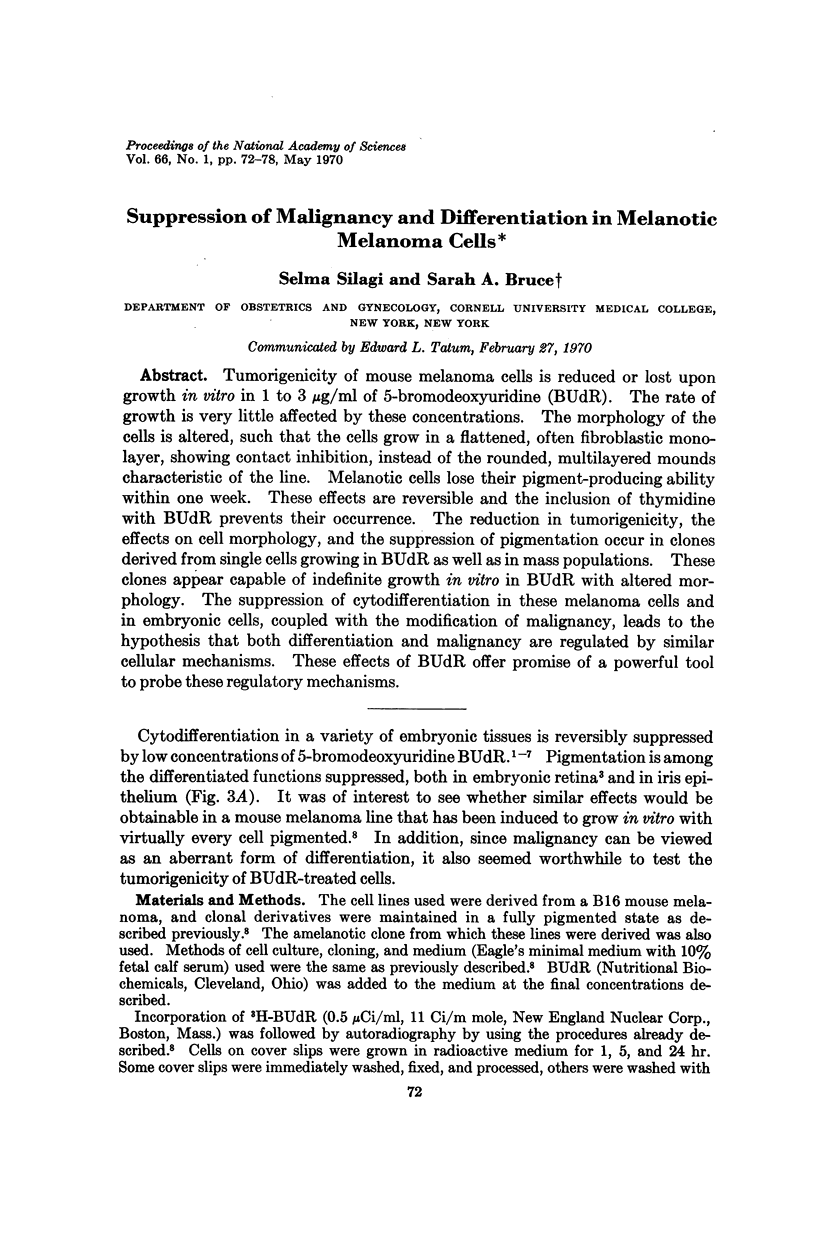
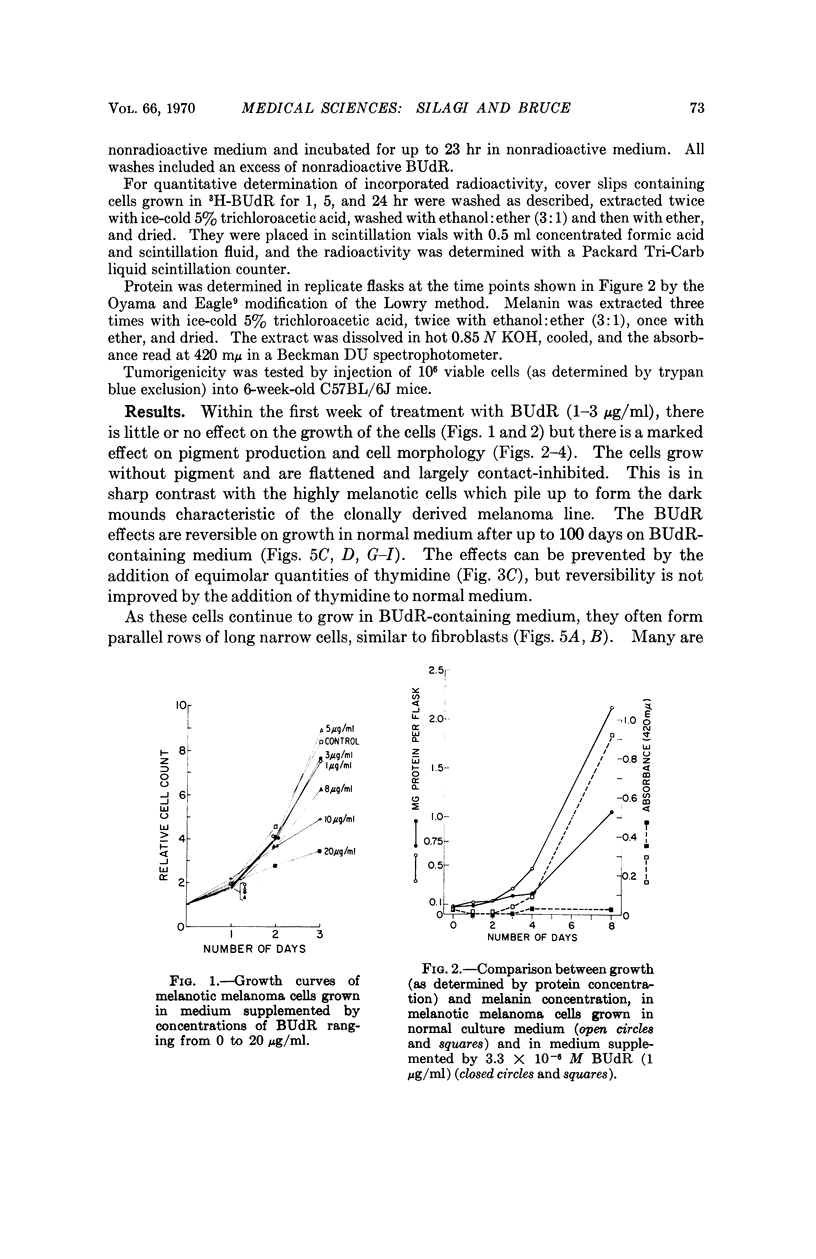
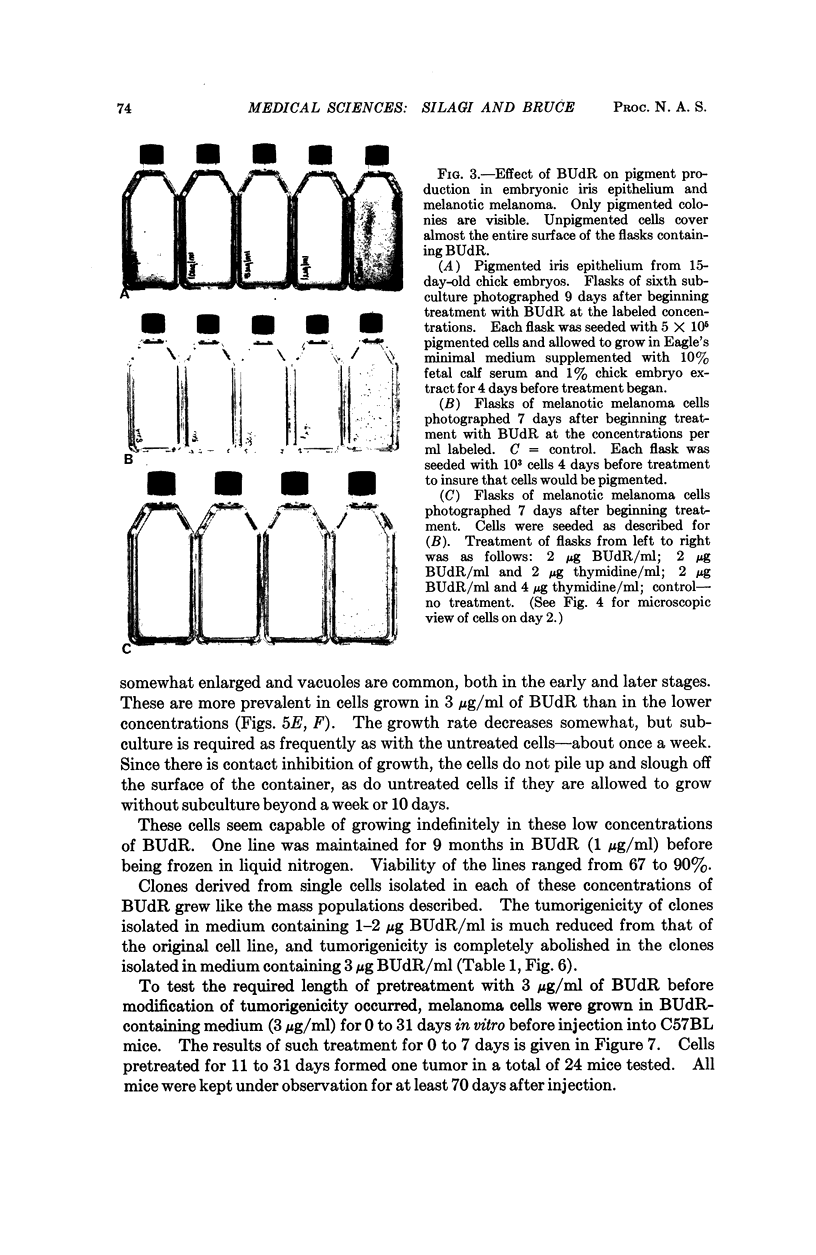
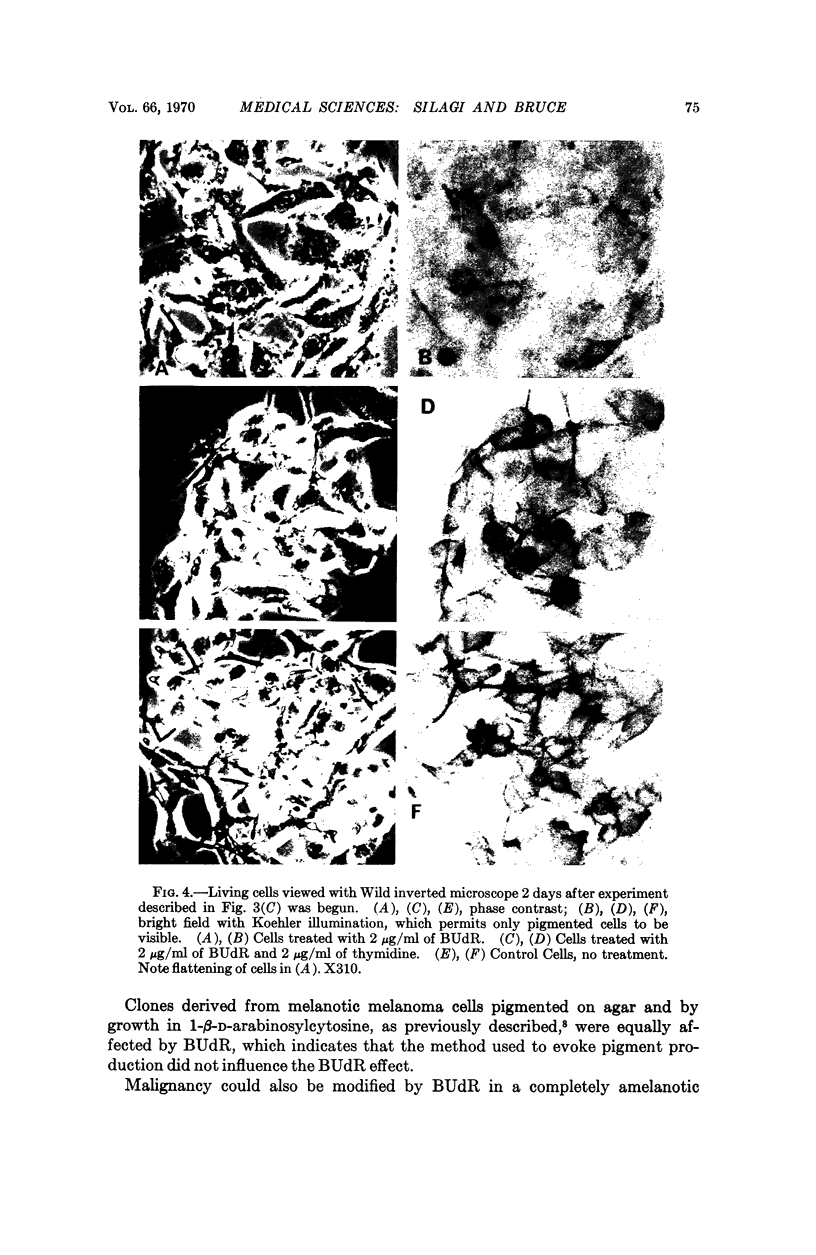
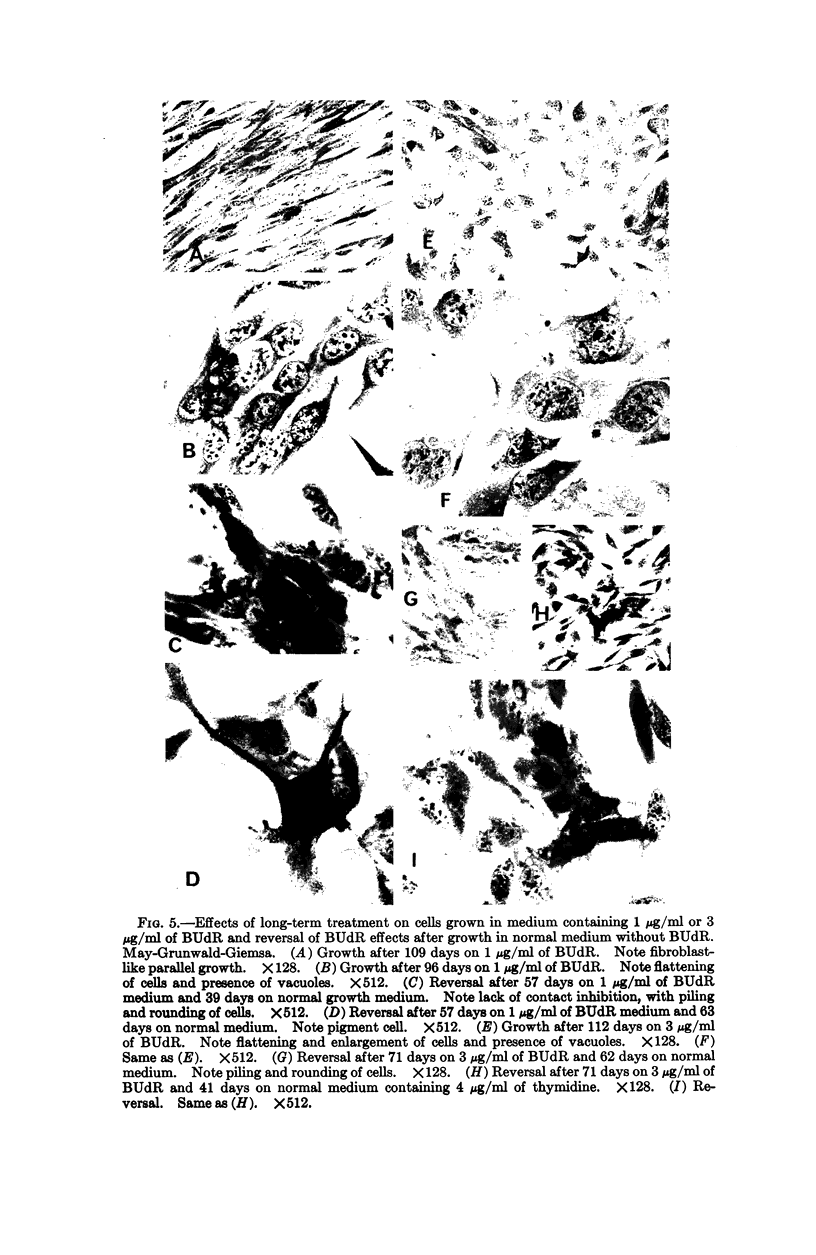

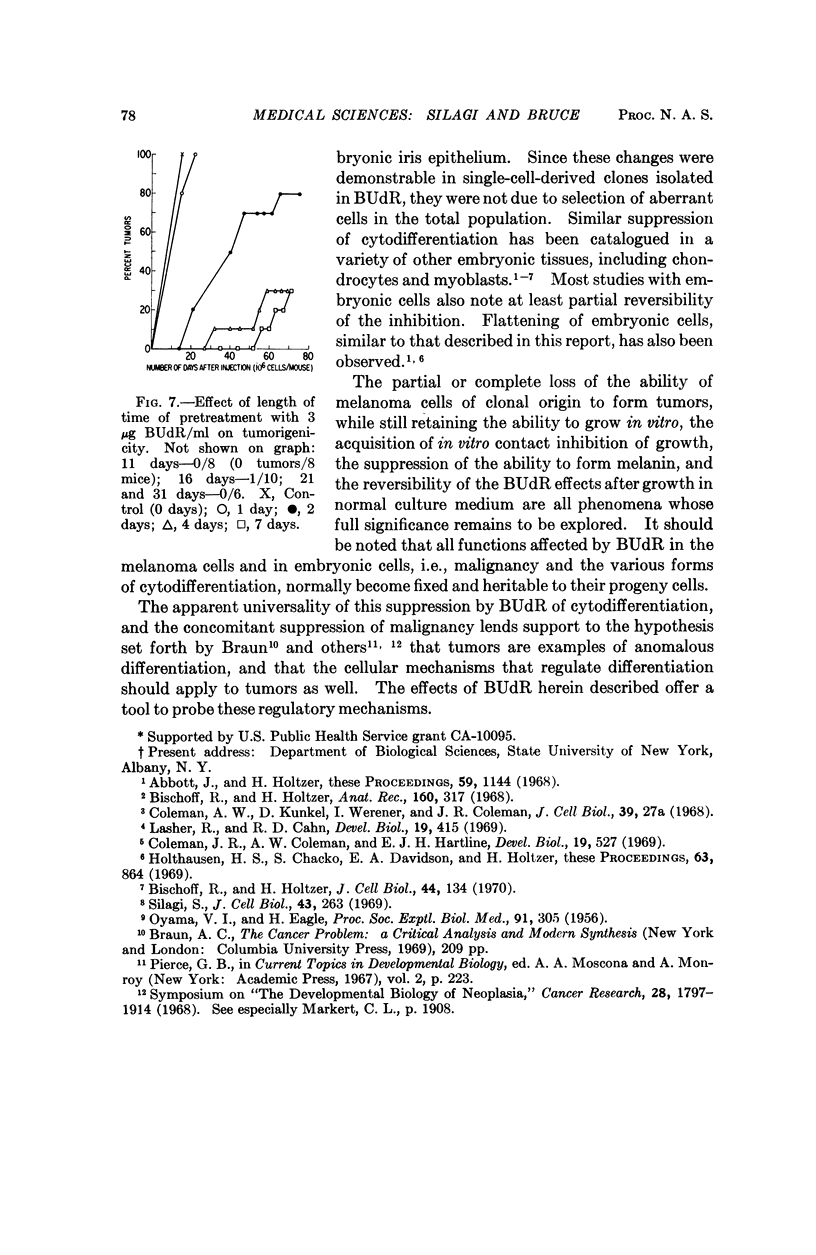
Images in this article
Selected References
These references are in PubMed. This may not be the complete list of references from this article.
- Abbott J., Holtzer H. The loss of phenotypic traits by differentiated cells, V. The effect of 5-bromodeoxyuridine on cloned chondrocytes. Proc Natl Acad Sci U S A. 1968 Apr;59(4):1144–1151. doi: 10.1073/pnas.59.4.1144. [DOI] [PMC free article] [PubMed] [Google Scholar]
- Bischoff R., Holtzer H. Inhibition of myoblast fusion after one round of DNA synthesis in 5-bromodeoxyuridine. J Cell Biol. 1970 Jan;44(1):134–150. doi: 10.1083/jcb.44.1.134. [DOI] [PMC free article] [PubMed] [Google Scholar]
- Coleman J. R., Coleman A. W., Hartline E. J. A clonal study of the reversible inhibition of muscle differentiation by the halogenated thymidine analog 5-bromodeoxyuridine. Dev Biol. 1969 Jun;19(6):527–548. doi: 10.1016/0012-1606(69)90036-0. [DOI] [PubMed] [Google Scholar]
- Holthausen H. S., Chacko S., Davidson E. A., Holtzer H. Effect of 5-bromodeoxyuridine on expression of cultured chondrocytes grown in vitro. Proc Natl Acad Sci U S A. 1969 Jul;63(3):864–870. doi: 10.1073/pnas.63.3.864. [DOI] [PMC free article] [PubMed] [Google Scholar]
- Lasher R., Cahn R. D. The effects of 5-Bromodeoxyuridine on the differentiation of chondrocytes in vitro. Dev Biol. 1969 May;19(5):415–435. doi: 10.1016/0012-1606(69)90080-3. [DOI] [PubMed] [Google Scholar]
- OYAMA V. I., EAGLE H. Measurement of cell growth in tissue culture with a phenol reagent (folin-ciocalteau). Proc Soc Exp Biol Med. 1956 Feb;91(2):305–307. doi: 10.3181/00379727-91-22245. [DOI] [PubMed] [Google Scholar]
- Silagi S. Control of pigment production in mouse melanoma cells in vitro. Evocation and maintenance. J Cell Biol. 1969 Nov;43(2):263–274. doi: 10.1083/jcb.43.2.263. [DOI] [PMC free article] [PubMed] [Google Scholar]



